Precise salt ratios are essential for your fermented vegetables' safety and success. When you use the right amount (typically 2-5% by weight), salt creates the perfect environment for beneficial bacteria while inhibiting harmful ones that could make you sick. You'll need salt to maintain your vegetables' crunchiness, develop complex flavors, and guarantee proper preservation. Too little salt risks mold and spoilage, while too much can halt fermentation completely and leave you with inedible results. If you're ready to master the art of fermentation, understanding these exact measurements is your first step toward consistent, delicious results.
Understanding Salt in Fermentation
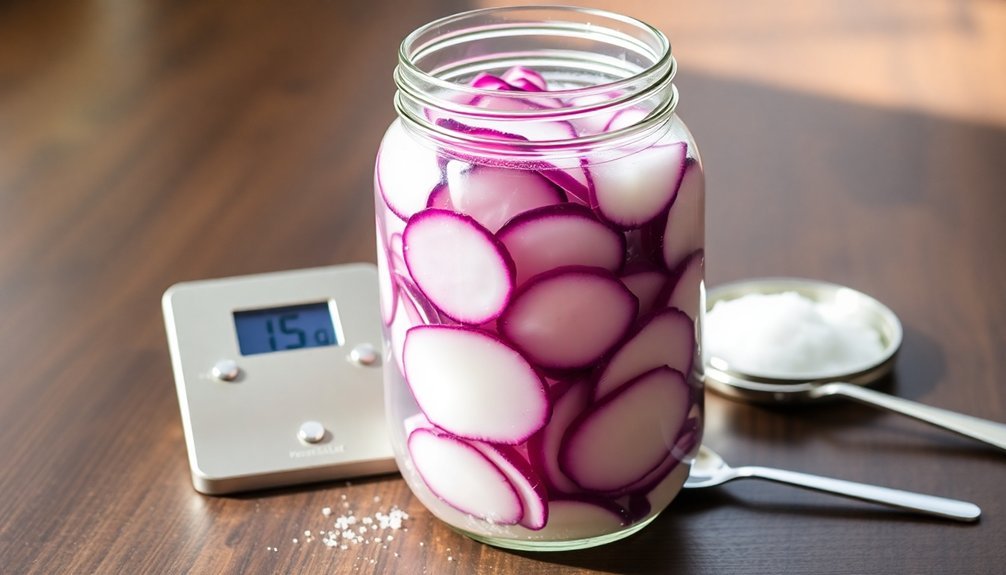
Salt science plays an essential role in the fermentation process, acting as both a preservative and a flavor enhancer. When you're fermenting vegetables, salt creates the perfect environment for beneficial lactic acid bacteria to thrive while preventing harmful bacteria from taking hold.
You'll notice that salt also helps maintain the crisp, crunchy texture of your vegetables by slowing down enzymatic activity that could otherwise turn them mushy. Using 2% salt by weight has proven to be the ideal concentration for most vegetable ferments.
What you mightn't realize is that salt's role extends beyond preservation. It's vital in promoting lacto-fermentation by creating an anaerobic environment where good bacteria can produce lactic acid. This process not only develops the characteristic tangy flavor you're looking for but also helps preserve the vitamin content of your vegetables.
As you draw moisture out of the vegetables through salt's osmotic properties, you're creating the ideal conditions for fermentation to occur.
You'll find that salt's influence on fermentation is precise and scientific. It's not just about taste – it's about creating the exact conditions needed for successful fermentation while ensuring your vegetables maintain their nutritional value and desired texture throughout the process.
The Science Behind Salt Ratios
Understanding precise salt ratios is fundamental to successful vegetable fermentation. When you're working with vegetables, salt creates the ideal environment for beneficial bacteria while inhibiting harmful ones. A salt concentration between 2% and 5% is vital – if you go below 2%, you'll risk unwanted bacterial growth and off-flavors, while exceeding 5% can halt fermentation entirely.
Salt works by drawing water from vegetables to create a nutrient-rich brine, which feeds beneficial microorganisms like Leuconostoc and Lactobacillus. This brine also submerges your vegetables, maintaining the essential anaerobic environment they need. The optimal temperature for fermentation falls within 70-80 degrees Fahrenheit.
You'll find that proper salt ratios help preserve vitamins and maintain that desirable crunch in your fermented vegetables. While you don't need to be absolutely precise with measurements, you'll want to stay within the recommended range for best results. The salt concentration affects how quickly your vegetables ferment and how flavors develop.
If you're new to fermentation, start with a 2.5% salt ratio and adjust based on your results. Remember that different types of salt can affect your measurements, so stick to one type (like pickling salt) until you're comfortable with the process.
Calculating Perfect Salt Percentages
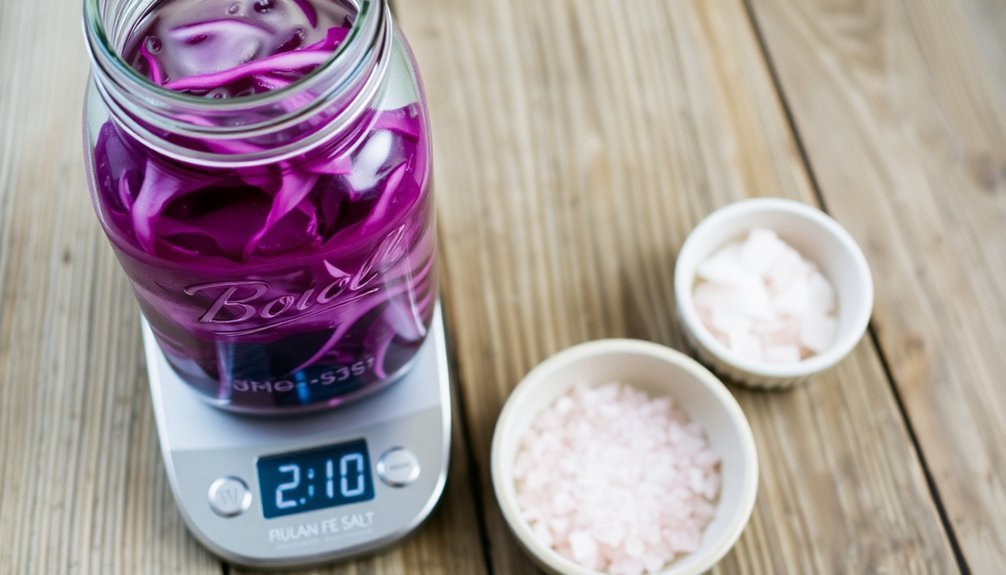
Precision in measurement forms the foundation of successful fermentation calculations. When you're calculating salt ratios, you'll need to use mass measurements rather than volume to guarantee accuracy.
Start by weighing both your produce and water together to determine the total mass you're working with. To achieve the perfect 2.5% salt concentration, multiply your total weight by 0.025. For example, if you've got 100 grams of vegetables and water combined, you'll need 2.5 grams of salt.
Remember that vegetables contain 93-98% water, which you must factor into your calculations to maintain consistent fermentation results. Digital scales are essential tools for achieving precise measurements.
You've got two main methods for adding salt: you can either sprinkle it directly onto your shredded vegetables, letting it draw out the natural juices, or create a brine by dissolving the salt in water first.
If you're using the brine method, you'll typically use 1-3 tablespoons of salt per quart of water. For more precise measurements, use a brine calculator to determine exact amounts.
If you're reducing salt content, consider adding whey or brine from a previous batch to maintain fermentation efficiency.
Common Salt Measurement Mistakes
While mastering salt calculations marks a significant step in fermentation, many home fermenters stumble over common measurement errors that can derail their efforts.
You'll find that relying on volume measurements instead of weight can lead to significant inconsistencies, as different salt types have varying densities. When you're not using a digital scale, you're missing the precision needed for successful fermentation.
Seasonal variations also play an important role in your measurements. You'll need to account for different water content in summer versus winter vegetables, as this affects the overall salt concentration.
Remember that environmental conditions like temperature and humidity can impact fermentation rates, requiring careful adjustments to your salt ratios.
- Using volume measurements instead of weight can lead to up to 50% variance in salt concentration
- Failing to account for vegetable water content affects the final salt percentage
- Not dissolving salt properly creates uneven distribution throughout your ferment
- Ignoring seasonal variations can result in inconsistent results between batches
When you're not maintaining proper salt concentration ranges (2-5%), you risk either encouraging harmful bacteria growth or halting fermentation entirely.
To achieve consistent results, you must measure precisely and consider all these variables in your fermentation process.
Choosing the Right Salt
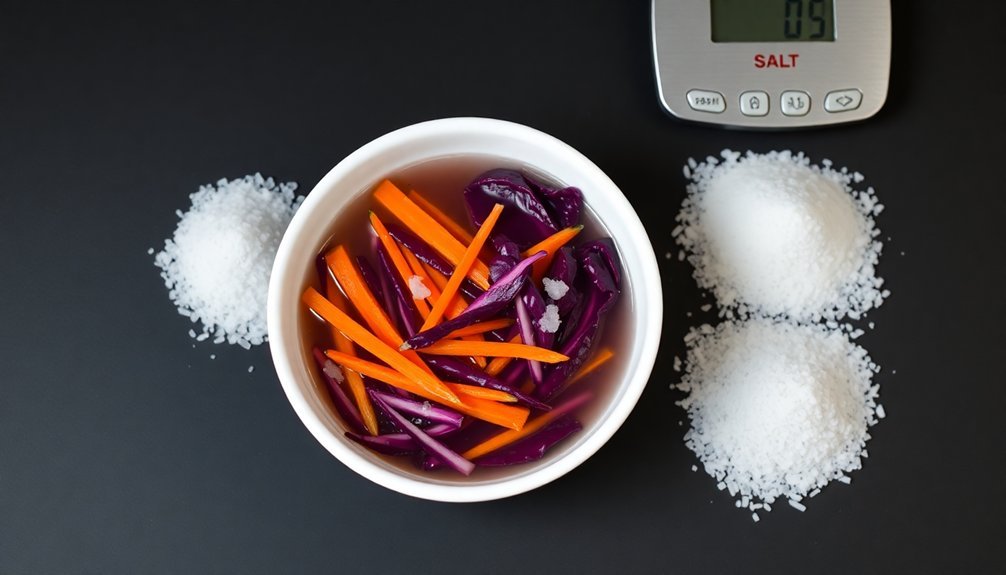
Salt selection represents a critical foundation for successful fermentation, and not all salts are created equal. You'll want to avoid table salt entirely, as its iodine content can interfere with the fermentation process and produce unwanted results. Instead, focus on salts specifically suited for fermentation.
Kosher salt stands out as your best starting point, especially if you're new to fermentation. It's easy to measure, dissolves quickly, and works well in both brine and dry salting methods.
If you're looking to reduce sodium intake, consider Himalayan pink salt, which offers a gentler taste and beneficial minerals like calcium and potassium.
For pickle-making, you'll find pickling salt particularly effective due to its pure composition and fine grain structure. Just remember it's quite potent, so use it sparingly.
Sea salt can work well too, but you'll need to be careful with measurements due to its intense flavor and varying mineral content. When using sea salt, opt for the flaked variety over crystalline form, as it dissolves more readily in your ferments.
Salt's Role in Food Safety
Food safety stands at the heart of successful fermentation, with proper salt levels serving as your primary defense against harmful microorganisms. When you add the right amount of salt to your fermented vegetables, you're creating an environment that selectively inhibits dangerous bacteria while allowing beneficial cultures to thrive.
Salt works by reducing water activity and causing osmotic shock in harmful microbes, effectively preventing the growth of pathogens like Listeria, Salmonella, and Clostridium botulinum.
Understanding salt's protective role is essential for your fermentation success. It's not just about preservation – it's about creating the perfect balance where good bacteria can flourish while harmful ones can't survive.
You'll find that proper salt ratios help maintain both the safety and quality of your fermented vegetables throughout the process.
- Salt creates an inhospitable environment for pathogenic bacteria through water activity reduction
- It maintains vegetable crunchiness while allowing beneficial fermentation to occur
- Proper salt levels prevent contamination and guarantee consistent results
- Salt helps develop complex flavors while keeping your ferments safe to consume
If you're considering reducing salt in your ferments, remember that it may compromise both safety and shelf life, potentially allowing harmful bacteria to grow.
Dry Salting Vs Brine Method
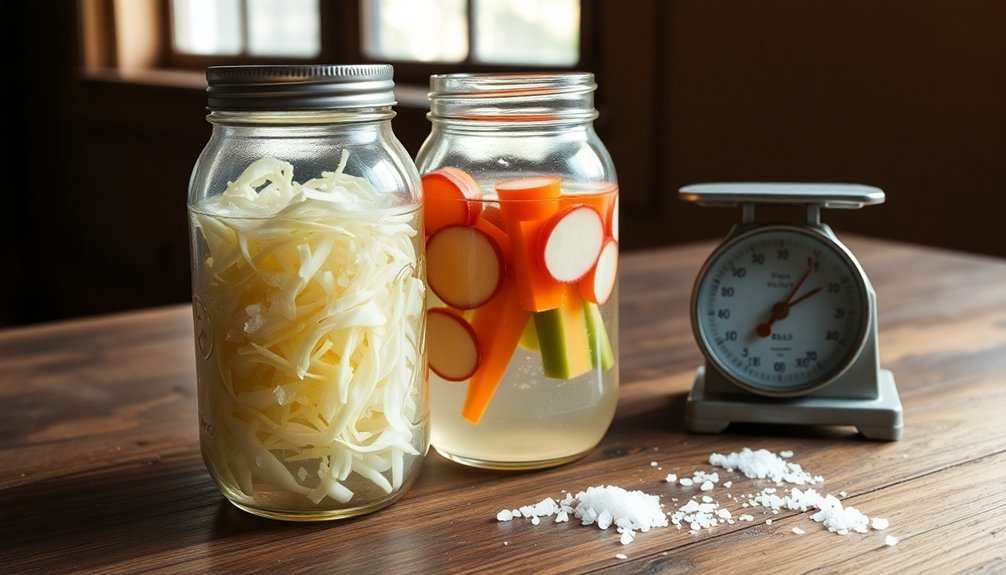
The art of fermentation offers two distinct approaches to preserving vegetables: dry salting and brining. Each method serves specific purposes and yields different results in your fermented foods.
You'll want to use dry salting when working with finely chopped or naturally watery vegetables like cabbage for sauerkraut or carrots for kimchi. This method requires you to add salt directly to your vegetables, typically using 2% of the total ingredient weight. After 10-15 minutes, the vegetables release their natural juices, creating a brine that submerges them.
You'll notice this method produces more concentrated flavors in your final product.
The brine method, on the other hand, is your go-to approach for whole vegetables or those that don't release enough liquid on their own, like cucumbers or garlic cloves. You'll need to prepare a saltwater solution, usually between 2-5% concentration, and pour it over your vegetables.
For example, if you're using a 2.5% ratio, you'll add 25g of salt per liter of water. This method's easier for beginners and results in a milder, more balanced flavor profile.
Optimal Salt Levels by Vegetable
You'll need to carefully measure salt concentrations based on your chosen vegetables, with root vegetables requiring 2-2.5%, leafy vegetables needing 1.5-2.5%, and cucumbers demanding 3% salt by weight.
Using a digital scale guarantees accuracy when calculating salt ratios, as even small measurement errors can impact fermentation success.
For precise results, multiply the total weight of your vegetables and water by the recommended percentage (for example, 0.02 for 2%) to determine the exact amount of salt needed.
Salt-to-Vegetable Weight Charts
Successful fermentation hinges on precise salt-to-vegetable ratios, with different vegetables requiring specific concentrations for peak results.
You'll find that most vegetables thrive with a 2% salt ratio, which creates the perfect environment for beneficial bacteria while preventing harmful organisms from growing. When you're fermenting cucumbers, squash, or hot peppers, you'll need to increase the salt concentration to 3-4% to maintain their signature crunch and ward off mold.
To calculate the exact amount of salt needed, weigh your vegetables and water together, then multiply that total by the desired percentage. For example, if you're using 1000g of vegetables and water with a 2% ratio, you'll need 20g of salt.
- Most vegetables (including cabbage, carrots, and beets) need a 2% salt ratio
- Cucumbers and squash require 3-4% salt for prime texture
- Specialized ferments like olives need up to 10% salt
- Salt ratios below 2% increase the risk of failed fermentation
Remember that using too little salt can lead to spoilage, while too much can halt fermentation completely.
Using a digital scale guarantees you'll achieve the precise measurements needed for successful fermentation.
Measuring Methods That Matter
Building on these salt ratio fundamentals, accurate measuring methods make all the difference between a thriving ferment and a failed batch.
You'll achieve the most consistent results by using weight-based measurements, which allow you to precisely calculate salt percentages based on your total ingredient mass.
To measure correctly, you'll need to weigh both your vegetables and water together, then multiply that total by your target salt percentage (typically 2.2-2.5%). For example, if you're aiming for a 2.5% brine, multiply your total weight by 0.025 to determine the exact amount of salt needed.
When using the brine method, you'll calculate based on your jar's volume – a 1L jar requires 20 grams of salt for a 2% solution.
Remember that different vegetables contain varying amounts of water, which affects your calculations. Summer vegetables often hold more moisture than winter ones, and root vegetables may need different ratios altogether.
You'll want to adjust your measurements based on the specific vegetable you're fermenting, keeping in mind that while 2-3% is generally safe, each vegetable's water content and desired fermentation speed should influence your final calculations.
Signs of Incorrect Salt Usage
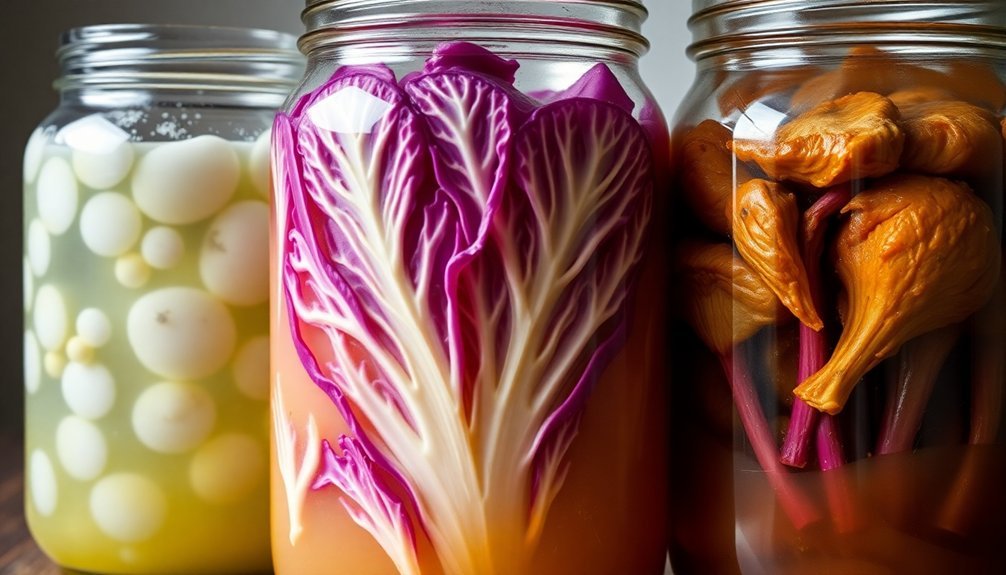
You'll need to watch for signs that your salt levels aren't right when fermenting vegetables, as both too little and too much can cause problems.
When you don't use enough salt, you risk mold growth, pathogen contamination, and mushy vegetables that lack proper preservation.
Using too much salt can halt fermentation entirely, leaving you with overly salty, hard vegetables that won't improve with time.
Too Little Salt Risks
The risks of using too little salt in fermentation can compromise both the safety and quality of your preserved vegetables. When you don't use enough salt, you're creating an environment where harmful bacteria and molds can thrive, potentially leading to dangerous pathogens like E. coli, Salmonella, or even C. botulinum if the pH doesn't drop sufficiently.
Your fermentation process will likely speed up too much without adequate salt, preventing proper flavor development and potentially causing off-tastes. You'll also notice that your vegetables become soft and mushy instead of maintaining their desired crunchiness, as salt plays an essential role in drawing out moisture and maintaining texture.
- Harmful bacteria and pathogens can grow more easily, making your ferments unsafe to consume
- Vegetables will lose their crispness and become unpleasantly mushy
- Fermentation may proceed too quickly, resulting in poor flavor development
- Shelf life will be greatly reduced, and you'll risk spoilage or container damage
Without proper salt levels, you'll need to take additional precautions, such as using starter cultures or considering pasteurization. The preservation process won't be as effective, and you'll risk both the safety and longevity of your fermented vegetables.
Too Much Salt Problems
Just as too little salt can be problematic, excessive salt in your fermented vegetables creates its own set of challenges. If you've added too much salt, you'll notice that the fermentation process slows down considerably or even stops completely. This happens because high salt concentrations inhibit the growth of beneficial lactic acid bacteria, potentially leading to poorly fermented or spoiled vegetables.
You'll also notice changes in your vegetables' texture. Too much salt can make them overly crunchy or tough, preventing them from developing the ideal texture you're aiming for. This affects not only their palatability but also their overall eating quality.
The health implications of over-salted ferments shouldn't be overlooked. When you consume fermented vegetables with excessive salt, you're increasing your sodium intake, which can contribute to high blood pressure and affect bone health through increased calcium excretion.
If you've over-salted your ferment, you can try corrective measures. You might dilute the brine with additional water, mix in fresh vegetables, or soak the fermented vegetables in fresh water for 2-3 days.
Remember that while this may help reduce saltiness, you might lose some probiotic benefits in the process.
Long-Term Storage and Preservation
Successfully preserving fermented vegetables for extended periods hinges on maintaining precise salt ratios and ideal storage conditions. When you're aiming for long-term storage, you'll need to use salt concentrations between 2% to 5% of the total weight of vegetables and water. This ratio creates a favorable environment that inhibits harmful bacteria while allowing beneficial lactic acid bacteria to thrive.
For the best preservation results, you'll want to adjust your salt ratios based on specific vegetables and environmental conditions. Cucumbers and squash typically need 3% to 4% salt, while olives might require up to 10%. If you live in a warmer climate, you'll need to increase these ratios slightly to guarantee proper fermentation.
- Store fermented vegetables below 50°F to maintain quality and extend shelf life
- Monitor brine levels regularly to guarantee vegetables remain submerged
- Use weight measurements instead of volume for precise salt ratios
- Maintain anaerobic conditions by keeping vegetables fully submerged in brine
Remember that incorrect salt ratios can lead to spoilage, poor texture, and unwanted microbial growth. By maintaining proper salt concentrations, you'll guarantee your fermented vegetables stay fresh and crisp for up to a year or more.
Frequently Asked Questions
Can I Reuse Brine From Previous Ferments for New Batches?
Yes, you can reuse brine from previous ferments to start new batches. Add 1/2 cup for quart jars or 1 cup for gallon jars, but you'll still need extra salt and water for proper fermentation.
Why Do My Fermented Vegetables Sometimes Develop a Metallic Taste?
Metallic taste in your ferments isn't typically related to fermentation. It's more likely due to your oral health, medications, or vitamin deficiencies. Check your equipment and make sure you're using non-reactive containers.
Should I Adjust Salt Ratios When Fermenting at Different Altitudes?
You don't need to adjust salt ratios based on altitude alone. Instead, focus on temperature, which affects fermentation more directly. Keep using standard 1-3% salt ratios but monitor fermentation time more closely at higher elevations.
Can I Mix Different Vegetables in the Same Ferment?
Yes, you can mix different vegetables, but they should have similar water content and fermentation times. You'll need to adjust salt ratios accordingly and guarantee all vegetables stay submerged in the brine.
How Do Seasonal Temperature Changes Affect Salt Concentration Requirements?
You'll need to adjust your salt ratios based on seasonal temperatures. Use slightly more salt in warmer months to control fermentation speed, and standard amounts in cooler weather when fermentation naturally slows down.
In Summary
You'll find that maintaining precise salt ratios is essential for successful fermentation. It's not just about preservation – it's about creating the perfect environment for beneficial bacteria while keeping harmful microorganisms at bay. Whether you're using dry salt or brine methods, remember that different vegetables need different amounts. Master these ratios, and you'll consistently produce safe, flavorful ferments that'll last for months.

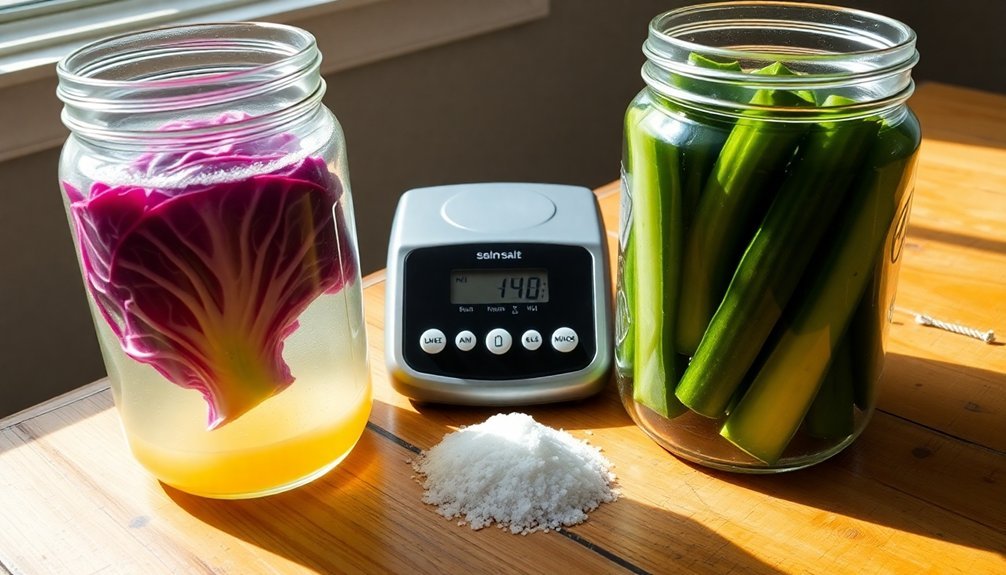
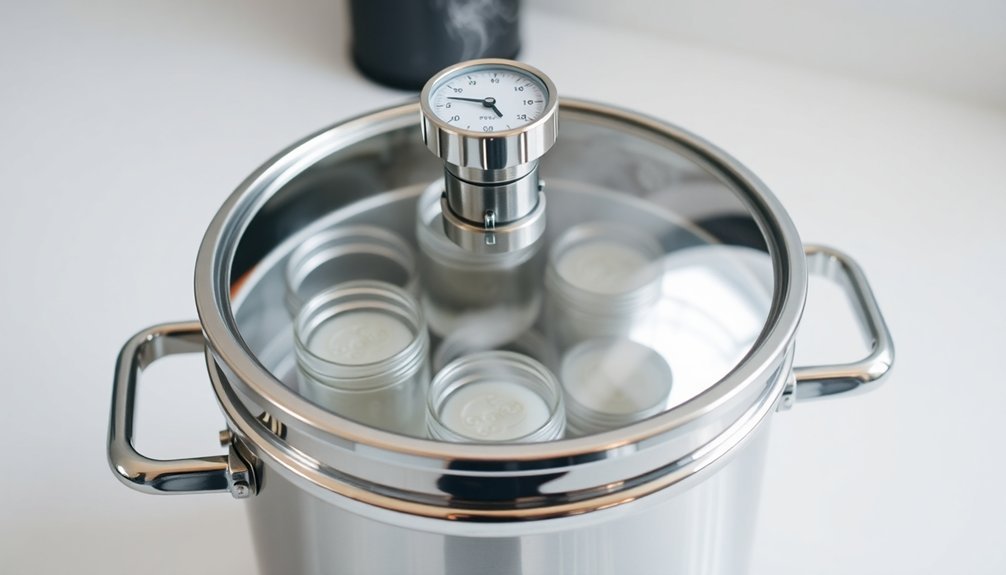
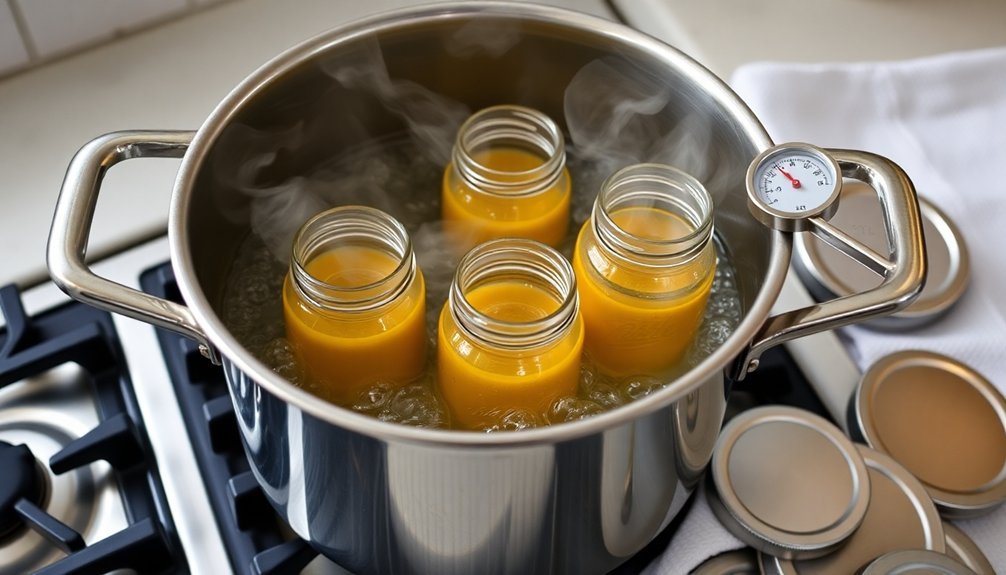

Leave a Reply